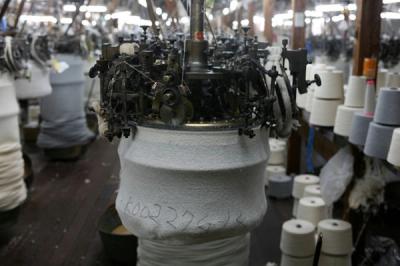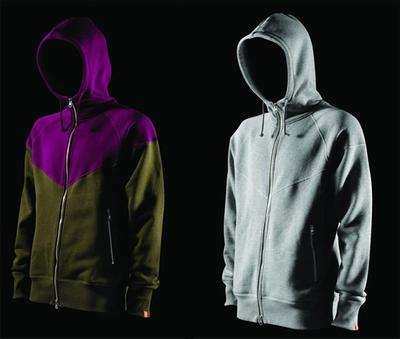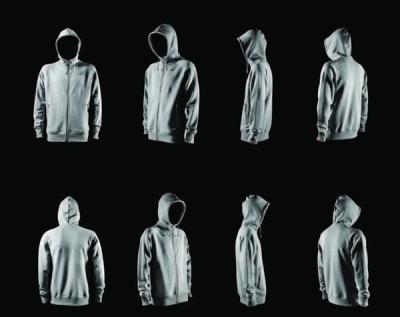Satoshi Suzuki (Loopwheeler) Interview
Innovation comes from everywhere and the Nike Sportswear collection’s design team recently looked to the history of Japanese manufacturing for techniques that would create the ultimate fleece. To get there they teamed up with Loopwheeler, a bespoke factory that still produces fabric on vintage machines called 'loopwheels.' Each one of these giant machines, some of which are 80 years old, is capable of producing 12 meters of fabric per day, enough for only eight sweatshirts. So you can be promised the quality of this fleece in the NSW collection is bar none. Courtesy of Nike we were able to get a look into this process with Loopwheeler owner, Satoshi Suzuki.
When did you first develop your passion for clothing and materials?
It was with a sweatshirt that my mom bought me. It was made using a loopwheel machine. I still remember the sensation of the lining when I wore it which was soft and comfortable. It was that sweatshirt that started my passion for materials and clothing.
What was your motivation to create Loopwheeler?
The loopwheel fabric has the best texture and it makes perfectly original sweatshirts. Japan is the only country that still has the technology to knit loopwheel fabric for sweatshirts and there are only 200 loopwheel machines left in the world.
Creating Loopwheeler products is a timely process, what makes this process so unique?
A machine weaves 24 loops a minute, which is slow enough that you can track the movement with your eyes. Experienced craftsmen have to attend the machine constantly. Slowly and gently, without putting excessive tension on threads by only leveraging gravity, the machine knits the fabric to enhance the natural texture of the thread. It feels as if air was knitted into the material. Whenever possible we use a flat seam sewing machine that was used heavily back in the 1950s. Machines today require around 10mm allowance, but this machine requires only a couple of millimeters. A small allowance reduces overlays of materials and bulk creating a more comfortable finished product. In addition the flat seam machines use six threads at a time; more threads in the seam increase strength and durability to the product. It’s slow, takes more attention, but the natural skill of the engineers truly affects the quality. I believe it is made with mysterious skill unique to Japan, which no one can duplicate.
How did Nike and Loopwheeler work together with the Loopwheeler philosophy being about traditional quality and Nike’s about innovation.
We have one thing in common, important heritage. Similar to Nike, Loopwheeler’s vision is to stick to traditional quality while creating contemporary products at the same time. We call it “future heritage.”
How closely did you work with Jarrett Reynolds and the Nike design team?
Jarrett contacted me about two years ago which was the beginning of the relationship. At first, we made various samples, and talked with each other to share our ideas and visions for the future. After working together for over a year, we have really come to understand each other and have learned to compliment one another’s talents.
What makes Loopwheeler products so special?
At the core of Loopwheeler are the people. After producing a sample, I wash it 10 to 20 times at home using a regular washing machine and I always personally wear and test the product. However, what is the most important for Loopwheeler is the mindset of our staff. They are actually seeing every stitch of every Loopwheeler product as it is made and are obsessed with fine-tuning the formula for the thickness of the thread, gauge and mesh count. Each piece of Loopwheeler product is made by hand and finished with their affection.



